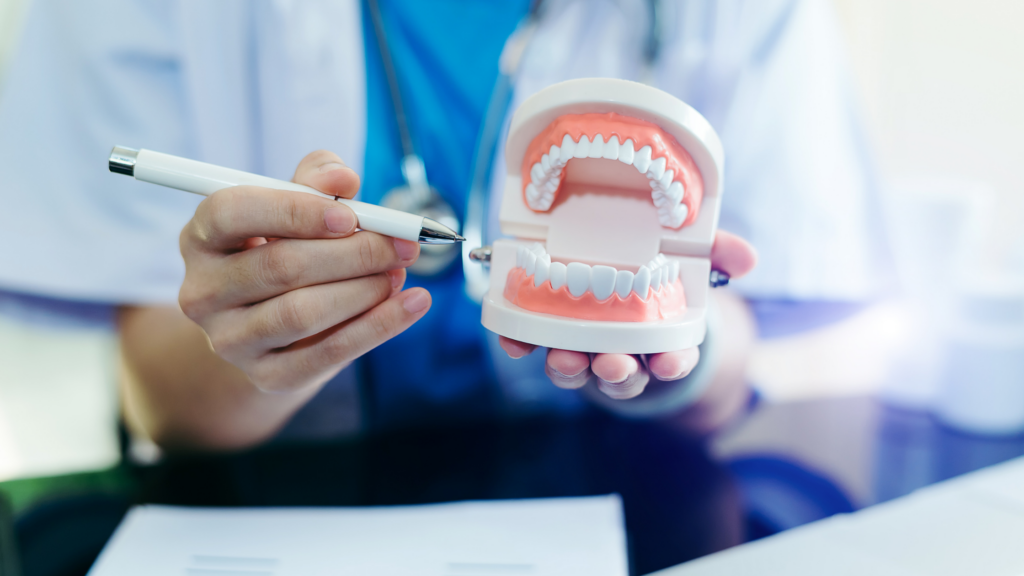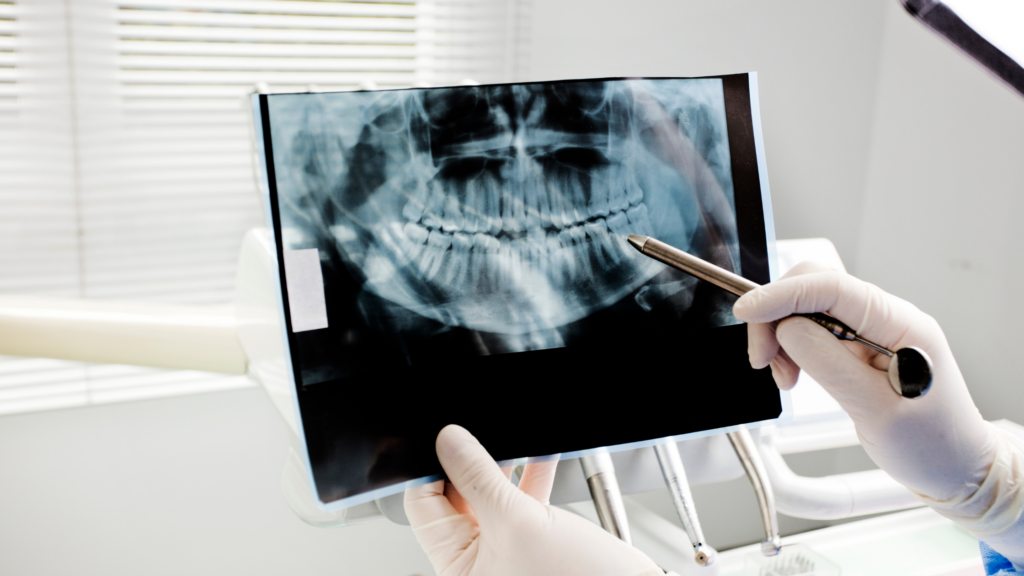Sleep apnea is a serious sleep disorder that affects millions of people worldwide. While traditionally associated with sleep medicine specialists, dentists are increasingly playing a vital role in the detection and management of this condition. This blog explores the intricate relationship between dental care and sleep apnea diagnosis, highlighting how dental professionals can be at the forefront of identifying and addressing this potentially life-threatening disorder.
The Dentist’s Unique Position in Sleep Apnea Detection
Dentists are in a unique position to spot the signs and symptoms of sleep apnea. Unlike primary care physicians who may only see patients once a year, dentists typically examine their patients at least twice annually. This frequent interaction provides ample opportunity to observe changes in oral health and discuss sleep-related issues.
Intraoral Examinations: During routine check-ups, dentists can closely examine the teeth, jaw anatomy, tongue, and throat. These examinations can reveal telltale signs of sleep apnea, such as:
- Enlarged tongue with scalloped edges
- High, narrow palatal arch
- Signs of teeth grinding (bruxism)
- Redness or inflammation in the throat
Patient History and Questionnaires: Dentists can incorporate sleep-related questions into their patient intake forms and medical history reviews. This proactive approach helps identify potential sleep issues that patients may not have considered relevant to their dental health.
Key Indicators of Sleep Apnea in Dental Patients
Dentists should be aware of several indicators that may suggest the presence of sleep apnea:
Bruxism: Teeth grinding is often associated with sleep apnea. Patients may unconsciously grind their teeth and move their jaw forward in an attempt to open their airway during sleep.
Anatomical Features: Certain physical characteristics can predispose individuals to sleep apnea:
- Retruded mandible (recessed chin)
- Narrow jaw
- Large neck circumference
Oral Signs:
- Attrition (wear) on teeth, especially incisor wear
- Loss of vertical dimension in the bite
- Large, scalloped tongue
Reported Symptoms:
- Snoring
- Daytime sleepiness
- Lack of refreshing sleep
- Morning headaches
- Gastric reflux
- Frequent urination at night

The Importance of Dental Screenings for Sleep Apnea
Dental screenings play a crucial role in early detection of sleep apnea. Many patients are unaware that their dental health could be linked to sleep disorders, making these screenings an essential part of comprehensive dental care.
Benefits of Early Detection:
- Reduced risk of cardiovascular disease
- Better management of high blood pressure
- Decreased likelihood of stroke and diabetes
- Improved daytime alertness and cognitive function
- Enhanced mood and overall quality of life
The Collaborative Approach to Sleep Apnea Diagnosis and Treatment
While dentists cannot diagnose sleep apnea themselves, they play a pivotal role in the collaborative process of diagnosis and treatment
.Referral Process: Upon identifying potential sleep apnea symptoms, dentists can refer patients to sleep specialists for further evaluation
.Home Sleep Studies: Dentists can facilitate home sleep studies, which are convenient and cost-effective ways to assess sleep patterns.
Interpretation of Results: Sleep specialists interpret the sleep study results and provide a diagnosis.
Treatment Planning: Based on the severity of sleep apnea, treatment options may include:
- CPAP (Continuous Positive Airway Pressure) therapy
- Oral appliance therapy
- Combination of CPAP and oral appliances
- Surgical interventions (in severe cases)
Dental Devices for Sleep Apnea Treatment
For mild to moderate cases of sleep apnea, dental devices can be an effective treatment option.Types of Oral Appliances:
- Mandibular Advancement Devices (MADs): These devices move the lower jaw forward, helping to keep the airway open during sleep.
- Tongue Retaining Devices: These hold the tongue in a forward position to prevent airway obstruction.
Custom Fitting: Dentists play a crucial role in fitting and adjusting these devices for optimal effectiveness and comfort.

The Connection Between Sleep Apnea and Oral Health
Sleep apnea can have significant impacts on oral health, further emphasizing the importance of dental involvement in its management.
Bruxism and Tooth Wear: The grinding associated with sleep apnea can lead to excessive tooth wear, fractures, and temporomandibular joint (TMJ) issues.
Dry Mouth: Sleep apnea often leads to mouth breathing, which can cause dry mouth and increase the risk of tooth decay and gum disease.
Periodontal Disease: The systemic inflammation associated with sleep apnea may contribute to the development or progression of periodontal disease.
Pediatric Considerations in Sleep Apnea
Sleep apnea is not limited to adults; children can also be affected. Dentists, particularly pediatric dentists and orthodontists, play a crucial role in early detection.Signs in Children:
- Mouth breathing
- Bedwetting
- Behavioral issues
- Growth problems
- Enlarged tonsils and adenoids
Collaborative Approach: For pediatric cases, a team approach involving the dentist, pediatrician, ENT specialist, and orthodontist is often necessary.
Advanced Dental Technologies in Sleep Apnea Screening
Modern dental practices are incorporating advanced technologies to aid in sleep apnea screening and treatment
3D Imaging: Cone Beam Computed Tomography (CBCT) can provide detailed images of the airway, helping to identify potential obstructions.
Digital Impressions: Intraoral scanners allow for precise digital impressions, facilitating the creation of custom-fitted oral appliances.
Sleep Monitoring Devices: Some dental practices are incorporating take-home sleep monitoring devices to gather preliminary data on patients’ sleep patterns.

The Future of Dental Care in Sleep Medicine
As awareness of the dental-sleep connection grows, the role of dentists in sleep medicine is likely to expand.
Continuing Education: Dentists are increasingly pursuing additional training in sleep medicine to better serve their patients.
Integrated Care Models: The future may see more integrated care models where dental and medical professionals work closely together to manage sleep disorders.
Research and Development: Ongoing research is likely to yield new dental technologies and treatments for sleep apnea, further solidifying the dentist’s role in this field.
Conclusion
Dental care plays a crucial and often underappreciated role in the diagnosis and management of sleep apnea. By leveraging their unique position and expertise, dentists can significantly contribute to early detection, facilitating timely intervention and improving patient outcomes. As the field of dental sleep medicine continues to evolve, the integration of dental care into sleep apnea management will undoubtedly become more pronounced, offering hope for millions of individuals suffering from this serious sleep disorder.The collaborative approach between dentists, sleep specialists, and other healthcare providers represents a powerful model for comprehensive patient care. By working together, these professionals can ensure that sleep apnea is detected early, diagnosed accurately, and treated effectively, ultimately leading to healthier, more restful lives for patients.As patients, it’s important to be aware of the potential link between oral health and sleep disorders. Don’t hesitate to discuss any sleep-related concerns with your dentist during your next check-up. Remember, your dentist isn’t just there to care for your teeth – they could be your first line of defense against sleep apnea and its associated health risks.


